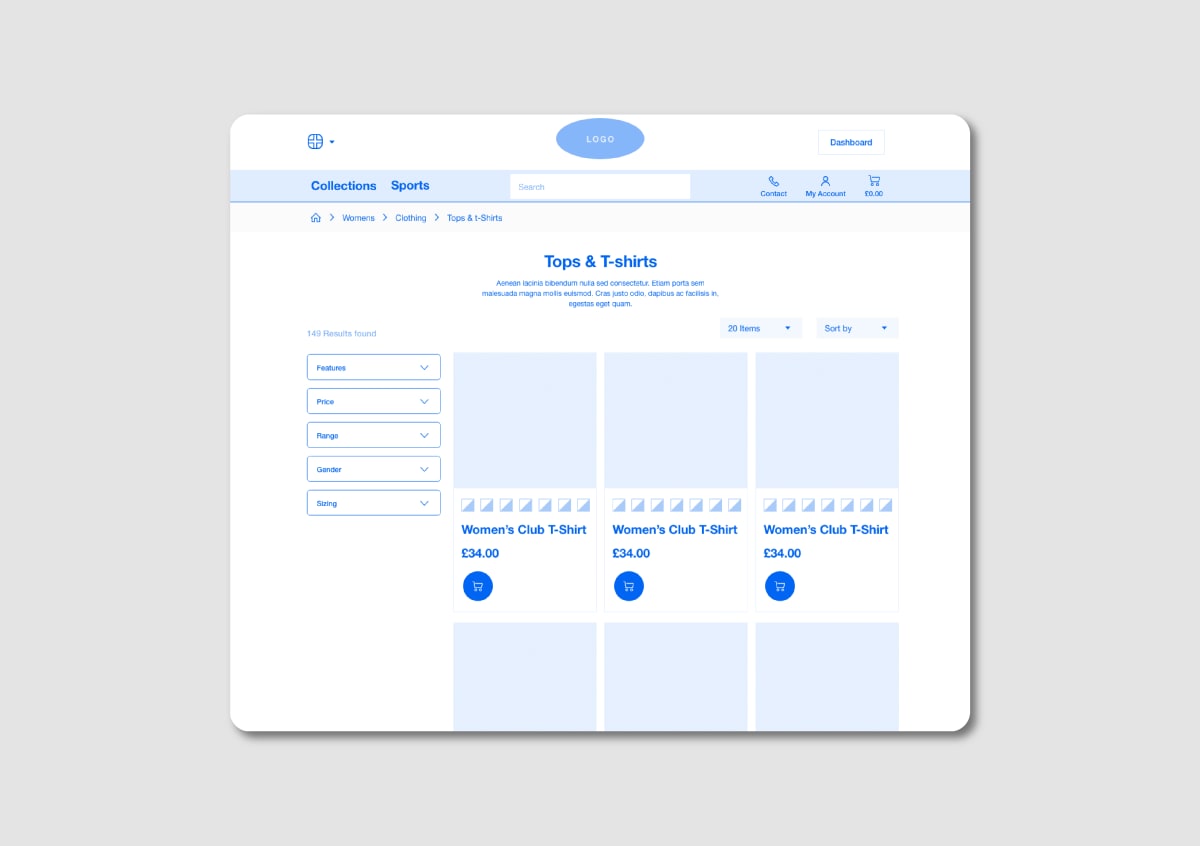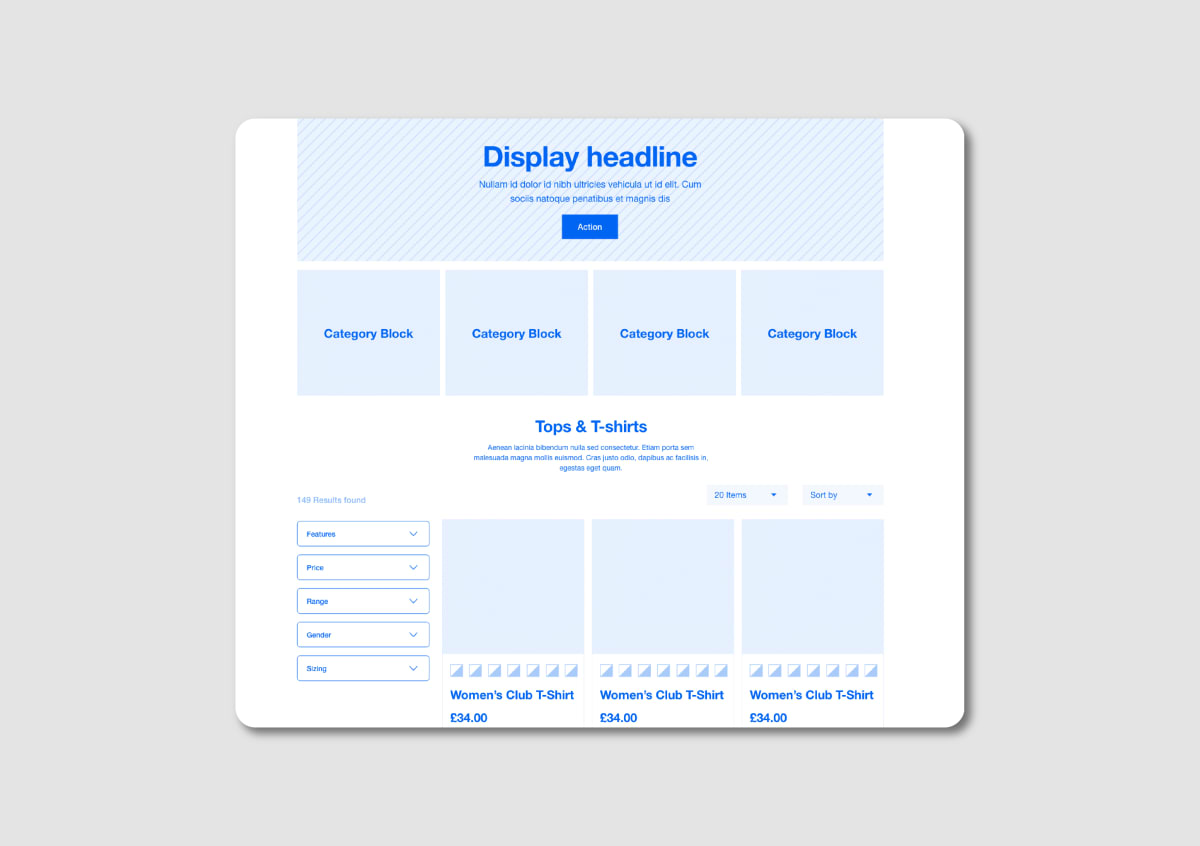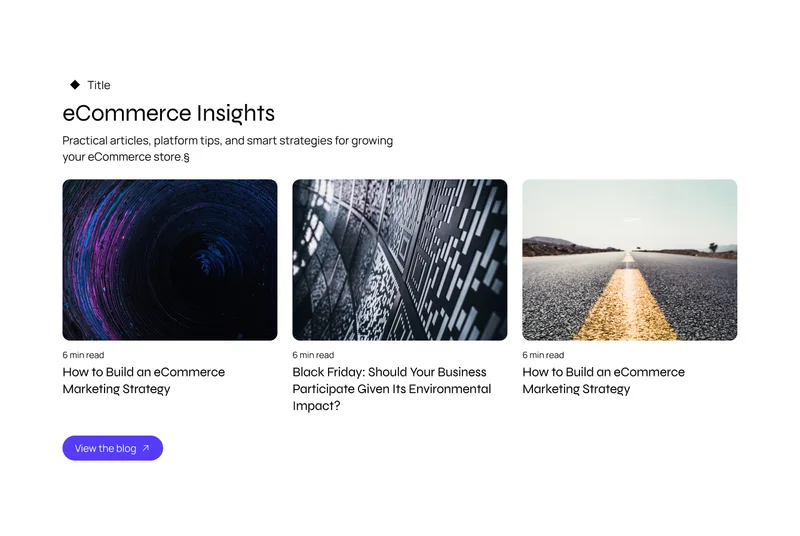February 13, 2023
Are category pages really that important when it comes to improving conversion rates?
Most category pages group products together to allow the customer to easily navigate and locate what they are looking for, reducing friction in the user journey.
When utilised correctly, category pages can reduce the amount of time required for customers to find products, helping to decrease bounce rates and improve conversions. Are you making the most out of your category pages? We’ve listed some of the most important features and benefits to help merchants fully optimise their categories for improving conversions.
Category Structure
It’s easy to assume all categories will have the same structure and design across your website but you should consider the purpose of that category and how your user is likely to interact with it before determining its format. There are three different types of category page; intermediary, product listing and blended.
Intermediary Category Page - These categories don’t contain product listings. They are often seen on larger eCommerce stores and usually showcase the different subcategories available along with guided product content such as ‘Best Sellers’ or ‘Trending Products’ and special offers.

Product Listing Page - The format you’re probably the most familiar with, these categories simply contain a list of products, usually with filter attributes to refine your search.

Blended Category Page - Some websites leverage both intermediary and product listing pages to combine the benefits of both. They might feature listing products from all categories with specific categories on the top of the page, or offering related categories to streamline the user journey.

A website can utilise multiple category types depending on the size of their catalogue and the purpose of those particular categories, for example…
You might be directing new traffic to your category page via a PPC campaign. This could be the first time these users have interacted with your brand and therefore showing them a standard catalogue of products may not have the desired effect. If you view these category pages as landing pages, you can see the importance of amending the structure to suit its purpose. Intermediary pages might be the preferred type here and you could try introducing your brand to new users through the use of banners, USPs and offers to encourage conversions.
In contrast to ad landing pages, an outlet or sale page may be on the other end of the spectrum. Customers have come to expect a similar experience to when they are shopping in person when it comes to outlets, seeing a large number of sale products which they can browse through at their own convenience. This is where a product listing page may be best suited and if the customer wants to narrow down their search they should be able to easily filter their results and order by price.
CRO Solutions
Generally speaking, CRO or Conversion Rate Optimisation is increasing the percentage of visitors who convert on your site. There are many ways in which category pages can help with this but here we’re specifically looking at CRO solutions such as product recommendations and AI category merchandising.
Product Recommendations
There are a selection of platforms such as Algolia that offer solutions that can be integrated with Magento to provide product recommendations to customers based on previous customer purchases and interactions. Using machine learning, these solutions serve a selection of products which are believed to be most likely to result in a sale.
AI Category Merchandising
Category merchandising can often be a cumbersome process, especially when it comes to Magento. AI category merchandising takes the manual process away from the merchant and into the hands of AI which will serve products in an order it believes will improve conversion rates.
Faceted Navigation
Faceted navigation is a type of navigation found within category and search results pages. Facets are indexed categories or attributes that allow the customer to narrow down the products on the page using a filter.
This improves the UX of the page, allowing the customer to efficiently navigate the category and locate the products they are looking for - making it easier for them to add to cart and check out.
Search Engine Optimisation
As well as the speed and usability of a category page, merchants can also consider optimising their category descriptions to help improve search position and ultimately increase organic traffic. Before writing a lengthy description full of keywords, it’s important to consider the page in its entirety. If your description is at the top of the page, are you going to push down the important content (the products) by writing lots of content?
Search optimisation should be considered in parallel with user experience, for example would it be better to have a short description at the top of the page with a longer, more search-friendly description at the bottom of the page?
Imagery and Brand
Imagery can play an important role in improving the overall experience of your category pages and increasing conversions. As well as utilising banner space to highlight brand messaging, promotions and USPs, merchants should also consider the images nested within product listings.
Is the image you’re showing on your product listing the image that’s most likely to encourage users to click? Do your customers respond better to CGIs, cutouts or lifestyle shots? A/B testing could be useful in highlighting how site users interact with different image styles. If you have multiple images you’d like to feature, you could consider a hover or scroll functionality. Find out why product photography is important.
Using Categories in Search
Make your category pages work even harder by integrating them with your search solution. As well as showing products as a user types their search query, consider syncing your categories too so that they have the option to click and browse a larger quantity of relevant products.
There are a number of ways in which well-structured category pages help improve the overall navigation and usability of a site, resulting in increased engagement and conversions. If you feel your category pages need improvement, why not consider one of our Comprehensive Magento Site Audits and our experts will take a deep dive into your site’s user experience and performance.
Last updated: December 3, 2024






